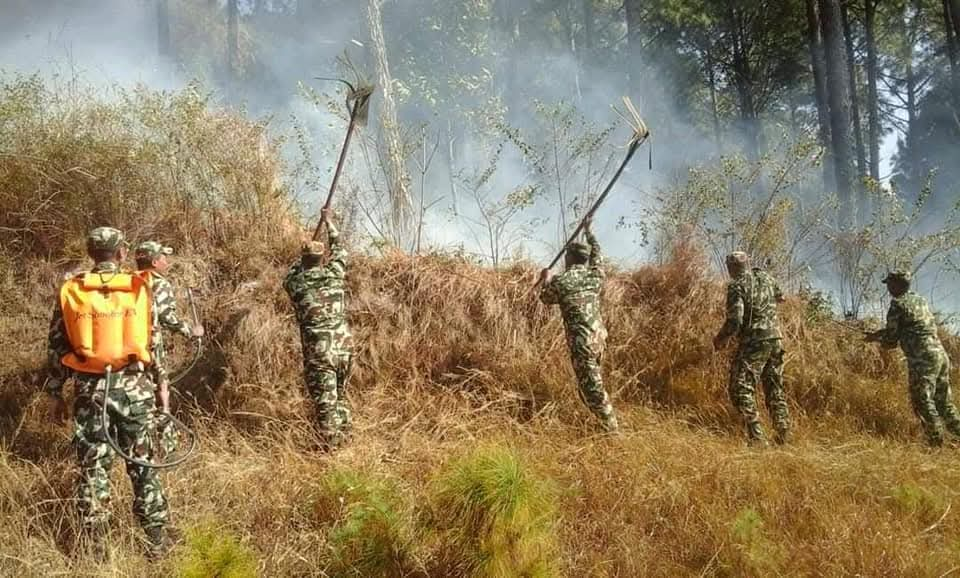Kathmandu, March 10, 2025 - Wildfires have become an escalating crisis in Nepal, with their frequency and intensity surging alarmingly in recent years. As the dry season takes hold, forests from the rugged hills to the expansive Tarai plains face an ever-increasing risk of ignition, endangering natural resources, wildlife, and human lives alike.
A stark example of this menace is the recent wildfire on Sarangkot Hill in Palpa, which has ravaged nearly 200 hectares of community forest. This devastation highlights the urgent need for effective wildfire management in Nepal—a challenge compounded by limited resources and outdated firefighting infrastructure.
Unlike wealthier nations like the United States, which employ advanced technologies to combat wildfires, Nepal must rely on resourceful, community-driven solutions tailored to its unique context. Indigenous fire management techniques offer a promising path forward.
One such strategy, controlled burning, involves deliberately setting small, manageable fires to eliminate dry grass and leaves that fuel larger wildfires. This method not only mitigates the risk of catastrophic fires but also fosters new vegetation growth, providing a vital food source for wildlife.
Another effective measure is constructing ponds and trenches in fire-prone areas. These structures act as barriers, slowing the spread of flames and ensuring water availability for both wildlife and vegetation—a crucial lifeline in times of crisis.
As wildfires grow in frequency and scale, the need for proactive, collective action has never been greater. Raising awareness, equipping local communities with the necessary tools, and integrating sustainable fire management practices can safeguard Nepal’s forests and the livelihoods they sustain.
The fight against wildfires is not merely a battle to protect trees; it is a fight to preserve ecosystems, biodiversity, and the very fabric of life that thrives within Nepal’s forests. The time to act is now.